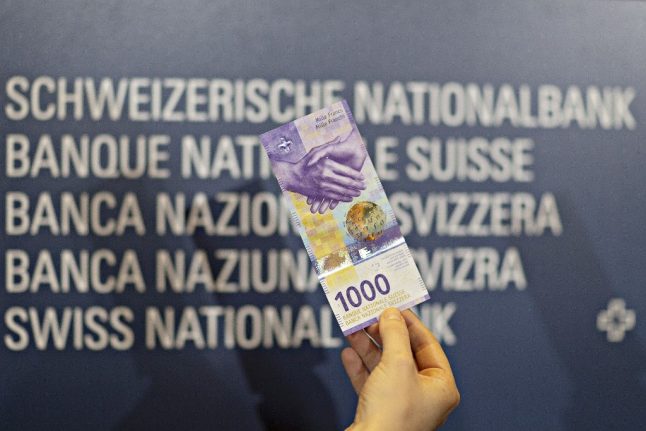The Swiss National Bank, which fixed a minimum exchange rate of 1.20 francs to the euro in September 2011, said on Thursday that it would "enforce this minimum rate with the utmost determination."
An SNB statement emphasised that if necessary, it was "prepared to buy foreign currency in unlimited quantities for this purpose."
The central bank had introduced the floor as fears of an imminent euro implosion coupled with concerns about soaring US debt levels, pushing investors to seek cover in the safe Swiss franc.
While the Swiss economy has remained a rare bright spot on the European map, the surging value of the franc created headaches for exporters, which have seen margins eroded by unfavourable exchange rates.
The franc has fallen recently amid a rosier outlook for the European common currency, sparking calls for the Swiss bank to remove its floor.
However, "the Swiss franc is still high," the central bank said.
"An appreciation of the Swiss franc would compromise price stability and would have serious consequences for the Swiss economy."
The central bank also maintained its three month range on Libor rates —- a benchmark instrument used all over the world — at between zero and 0.25 percent, a spokesman said on a conference call.
In addition, the bank stood by its December forecast that the Swiss economy would grow by between 1.0 and 1.5 percent this year.
The SNB revised its inflation outlook for the year however, and now expects Swiss consumer prices to drop by 0.2 percent in 2013, compared with its previous forecast of 0.1 percent.
In 2014, the SNB now expects Swiss inflation to stand at 0.2 percent, down from its previous forecast of 0.4 percen due to the "gloomier outlook" in the European Union, and at 0.7 percent in 2015.
In the foreseeable future, "there continues to be no threat of inflation in Switzerland," the SNB said.



 Please whitelist us to continue reading.
Please whitelist us to continue reading.
Member comments